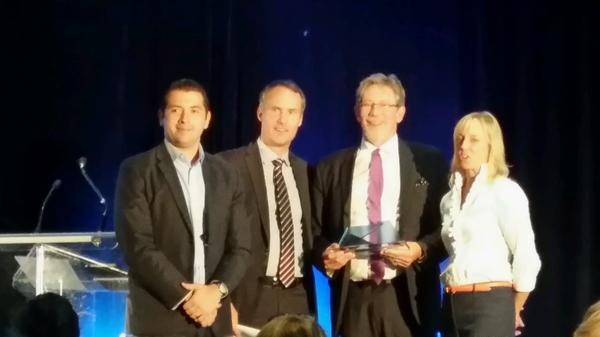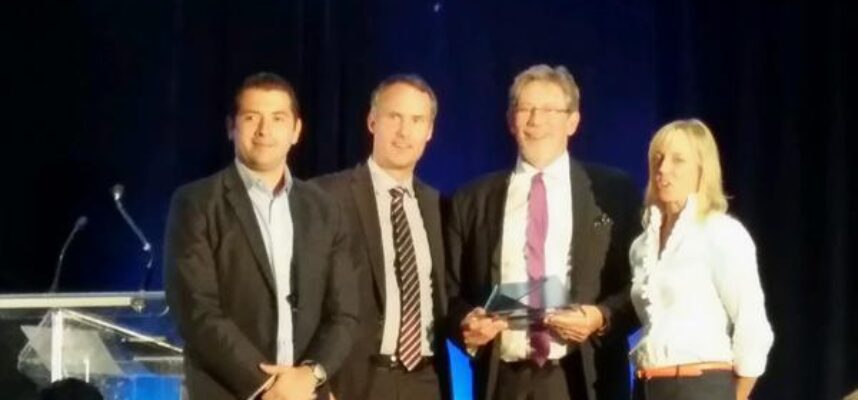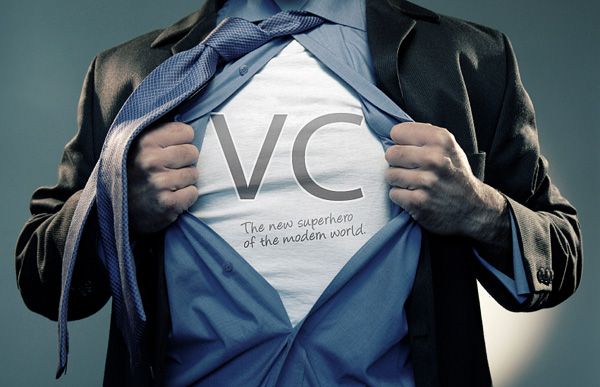3 Oct 2014
0 CommentsCanadian Angel of the Year Award

At the NACO Summit in Québec City, it was truly humbling to receive the Canadian Angel of the Year Award. I see this partly as a calling to be an ambassador to continue to help raise the Angel bar in Canada in the coming years. I wish to thank all those kind colleagues who, unbeknownst to me, wrote letters of nomination. Also, this is all based on the remarkable people at GTAN and in the Waterloo and Canadian ecosystem generally.
In response to the award, and recognizing the opportunity to build on current success, I shared the following observations and future challenges at the closing Keynote on Friday 3 October, 2014.
“TODAY’S CRITICAL MASS CAN POWER A QUANTUM LEAP”
Closing Keynote NACO Summit, Québec City Friday 2 October, 2014
Bonjours, mesdames et messieurs. Good morning, ladies and Gentlemen.
I hope that Yuri was aware of what he was unleashing by inviting me to share perspectives and future challenges of Angel investing in Canada! Not unlike a startup running on “fumes”, Canada’s angel sector reminds me of the quip from cartoonist Bill Hoest: “I just need enough money to tide me over until I need more”. I’ll start by looking back to help us paint a future directional context.
As Angel investors, we’ve watched a powerful people-driven engine, coming from nowhere, to become a key enabler of Canada’s future prosperity. As Angels, we fuel innovation companies with our capital and mentorship, ultimately creating some of the highest value jobs for 21st century Canada. What’s not to like about that?
Let’s turn the clock back about 5 years. In 2009, the global economy endured the infamous credit crunch, perhaps the worst economic correction since the Great Depression. I observed this to be the final nail in the coffin for a large number of Canadian venture capital firms, for years struggling to generate viable returns. The seeming extinction of venture capital A-rounds and the bleak landscape for young, emerging companies, compelled me, as a seasoned tech investor, to get involved with the founders at Golden Triangle AngelNet (GTAN) in Waterloo-Guelph-Wellington-Stratford area. In a pattern surely repeated across Canada, Angel Groups from a slow start quietly and persistently worked to fill the funding gap through a labour-intensive “syndication” of Angel capital, with other groups and with government co-investment. In Ontario, this meant repurposing MaRS IAF from its origins as a VC on-ramp to co-investment in Angel rounds, lobbying that ultimately led to the Feddev “Investing in Business Innovation” (IBI) program, and BDC convertible notes.
A typical syndication for a top tier investee company might entail half a million dollars of Angel money being spun into $1.5 million or more. I used to describe this approach as providing “half the money of a VC A round for 10 times the effort”. At the time, I imagined this to be a strategy for a short term “bridge” of Canada’s innovation ecosystem to a more sustainable future. How did this market correction turn out for Canadian Angels?
NACO stats show a remarkable growth in total Angel investment. Between 2012 and 2013 alone, Canadian Angel group direct investments grew a stellar 120% from $40 million to $89 million. Of course, this doesn’t capture the aforementioned co-investment leverage that Angel investors attract nor does it cover investments outside of NACO members. All of us rightfully deserve to be proud of such collective impact.
But is it enough? Both from my own international investing and available statistics, it would appear that Canada’s Angel ecosystem is ahead of Europe on the maturity curve. I would estimate Canada has a 3-5 year head start on Europe. On the other hand, our American friends are definitely well ahead in maturity, deal dollars and information gathering. Angel Capital Association (ACA) data shows almost $25 billion of total US angel investment in 2013. To be at this level, on a per capita GDP basis, Canada would need about $2.8 billion of annual Angel investment. Even counting all the leverage, Canadian angel investment needs to grow 5 to 10 times over the coming years just to achieve parity with the US.
In Waterloo, home of Perimeter Institute, we tend to love Quantum Mechanics metaphors. Thus, propelling today’s critical mass through a quantum leap is a mission all of us need to work on collectively and individually, whether as angels, angel groups, NACO, governments, venture capitalists, sponsors, in fact, each and every ecosystem participant.
So, I will conclude by identifying just five of the gaps that we collectively need to fill:
- Scaling: Recently, my friend Steve Currie, VP Strategy at Communitech, observed “Canada is great at starting companies, but not so good at growing them beyond the 5 year horizon.” This means less job creation but also smaller exits. In a study of 183 recent high tech exits versus 2300 comparable US exits, the average US valuation was US$384 million versus US$100 million for the Canadian companies. I don’t know about you, but I find it simply tragic to leave so much value on the table. Angels have a huge role both in mentoring management skills around scaling, but also pivotal to financing that scaling. And, bigger exits, will in a virtuous circle, drive more Angel investment.
- Giving Back: We need more of our successful serial entrepreneurs to become (super) angels and continue to start new ventures. In the Silicon Valley, Paypal alone had 14 serial entrepreneurs like Peter Thiel and Max Levchin whose experience and wealth helped build legends like LinkedIn, YouTube, Tesla, Kiva and Yelp. While we do have a few super angels, we have yet to spawn someone like Ron Conway whose 600 investments include Google, Facebook and Twitter. Canada needs more titans like Mike Volker and Jim Estill.
- Deal Discipline: Great companies grow and scale partly because of external motivations. In the 1990’s the hottest companies all wanted to do an IPO and that involved a playbook of enhanced management, systems and processes that also helped the companies scale into better organizations. VCs also played a part, but today, this role often falls onto Angel investors, hence requiring a more “institutional” approach versus becoming just another retail asset class.
- Co-investment: Government funding has been critical to our success and it is key that funding increasingly backs Angel choices rather than governments having to choose winners. That said, there is plenty of room for more. For example, our Feddev IBI program in Ontario provides a 50% match while the almost identical “Double Equity” program in Austria does a 100% match to angels. And, the Angel Tax Credit, so common internationally, in parts of the US and in BC, would provide a much-needed boost to overall Angel resources.
- Operational Innovation: Currently, most angel groups run as nonprofits using largely committed volunteer deal structuring and with little automation of the process. A big reason for this is Securities Regulations, especially in Ontario, that put a chill on innovations that might trigger an expensive regulatory burden. While there is some hope that the proposed Equity Crowd Funding rules might provide the clarity for such innovations, there is also the risk that this is a force that further pushes deals into a retail mode when what we need instead is more institutional discipline.
With these key points in mind, and assuming the right environment, I have no doubt that greater innovation in business models will fuel growth of a larger and more sustainable Canadian angel landscape. All of us can play our part. To dial up our game, will be an aggressive, yet I believe achievable challenge. And, we need even better measurement so we can regularly monitor, and report back to ecosystem participants, our progress.
The road forward isn’t just about traditional business. Because Angel investors’ motivations uniquely straddle the ever-blurring boundary between “passion capital” and Wall Street-style finance, Angel investing will increasingly be a great exemplar of Social Innovation. To me, the culture of collegiality and sharing resembles my experiences in nation-building around charitable foundations.
The last five years have witnessed an unprecedented expansion of Canadian Angel investing and we are poised for even more remarkable growth in the next five. In the words of the incomparable Alan Turing,
“We can only see a short distance ahead, but we can see plenty there that needs to be done”.
Now, let’s get to work …



 Bill Gates, partly at the instigation of Warren Buffet who added his personal fortune to that of Gates, left Microsoft, the company he built, to dedicate his life to innovative solutions to large world issues such as global health and world literacy through the
Bill Gates, partly at the instigation of Warren Buffet who added his personal fortune to that of Gates, left Microsoft, the company he built, to dedicate his life to innovative solutions to large world issues such as global health and world literacy through the  Started by Paul Brainerd, Seattle-based
Started by Paul Brainerd, Seattle-based  Jeffrey Skoll, a Canadian-born billionaire living in Los Angeles and an early employee of
Jeffrey Skoll, a Canadian-born billionaire living in Los Angeles and an early employee of  Waterloo’s own Mike Lazaridis aims to transform our understanding of the universe itself by investing hundreds of millions of dollars into
Waterloo’s own Mike Lazaridis aims to transform our understanding of the universe itself by investing hundreds of millions of dollars into 

 Founderitis (and the even more insidious variant known as Professor Founderitis) can be hard to overcome. This clearly speaks to the length of time for the great Maplesoft opportunity to reach the level today. Too many years were locked up in battles with people who, instead of focusing on building business and market value for shareholders, including themselves, would seem to rather have control even if it meant “going down with the ship.”.
Founderitis (and the even more insidious variant known as Professor Founderitis) can be hard to overcome. This clearly speaks to the length of time for the great Maplesoft opportunity to reach the level today. Too many years were locked up in battles with people who, instead of focusing on building business and market value for shareholders, including themselves, would seem to rather have control even if it meant “going down with the ship.”.

 Credit: AIAlex.com
Credit: AIAlex.com Unlike this sign, I don’t want to end this piece on a note of doom and gloom. Nor do I want to leave the impression that there aren’t very talented people in the Canadian VC industry. Nothing could be further from the truth – our long term VC gap arises from long term structural challenges, such as a lack of discipline as imposed by global LPs and not having reached the proper banker/operator mix. There are other factors, including the small population and large geography unique to Canada, but all can be and should be overcome with the proper model.
Unlike this sign, I don’t want to end this piece on a note of doom and gloom. Nor do I want to leave the impression that there aren’t very talented people in the Canadian VC industry. Nothing could be further from the truth – our long term VC gap arises from long term structural challenges, such as a lack of discipline as imposed by global LPs and not having reached the proper banker/operator mix. There are other factors, including the small population and large geography unique to Canada, but all can be and should be overcome with the proper model.
 Avvey Peters from Waterloo’s
Avvey Peters from Waterloo’s  Alec Saunders, CEO of one of Canada’s most promising web/mobile startups,
Alec Saunders, CEO of one of Canada’s most promising web/mobile startups,  Peter Childs, an Ottawa social media strategist and tech luminary, has laid out a framework
Peter Childs, an Ottawa social media strategist and tech luminary, has laid out a framework 
 Proper Economic Stimulus Can Lead To …
Proper Economic Stimulus Can Lead To … Significant Carbon Reduction
Significant Carbon Reduction
15 Jul 2019
0 CommentsInvesting Through The Unfolding Energy Disruption
Although a life long mathematician and technologist, recently much of my focus has been on being a savvy investor, in many asset classes from private seed/angel investing to public markets and alternative investments. While Canadian investors have traditionally thrived on conservative, cash generating value investing and fixed income plays, the future is rendering such risk averse models obsolete, making it critical to adopt a forward lens, looking out, perhaps a decade into the future.
I have lived through many market disruptions in which “software is eating the world.” Such disruptions include the “Kodak Moment” of digital photography rendering mining of silver oxide to supply the ecosystem around film irrelevant in a digital photography age. Another exemplar is the upending the entire value chain for newspapers and other ad-funded media by the likes of Google (Adwords) EBay (classified ads).
Energy has driven world economies for time immemorial and may even have led to the fall of the Roman Empire. As modern societies have become wealthier, energy consumption has seen stratospheric growth. The simple reason is that Energy underpins the creature comforts of modern society, including food, shelter, transportation and consumer consumption. There is widespread concern that this nonstop growth model that underpins our economy is ultimately unsustainable, particularly as rich country ways spread to the rest of the soon to be 10 billion people on planet earth. The younger generation, who will ultimately see the limits of such consumption in their lifetimes, has embraced a more pessimistic view of their future and adopted a focus on lifestyle changes, including low carbon (vegan or vegetarian) diets, not owning a car, and trying to eschew rampant consumerism.
Essentially, there are two paths open to a more sustainable way of living:
Thus, futurists have long predicted the same fate for energy driven by new technologies that include renewables, storage (battery and other), Digital Electricity, subjecting the global energy market to its own “Kodak Moment” of digital disruption. The future has arrived, and today in 2019, this energy disruption is already in full force, potentially rendering oil, gas and coal essentially obsolete over a time as short as the next decade.
What does this mean for the Canadian investor, including business, government and insurance companies who all will see their future results impacted by how this unfolds?
I have been researching a formal presentation around energy disruption for investors, but this recent CBC article spurred me to publish this post and perhaps have readers send me their thoughts and research.
The above article is instructive inasmuch as it paints a picture of a better world achieved by strategically and aggressively re-allocating resources in our economy. The suggestion is that to do so, far from being foolishly spendthrift, is our most rational and positive outcome. What it doesn’t say is that to delay doing this, by allowing others to capture leadership in the “new”, post fossil fuel, growth industries, render Canada a much poorer (aka “third world”) country in the future.
The fossil fuel (coal, oil and gas) industry is facing many headwinds, which has moved economists from a previous narrative of concern about “Peak Oil” (ie. the world is running out of oil) to the new narrative of “Peak Demand” (ie. demand will drop as energy consumption is disrupted by new technologies). Here are some of the head winds and their implications:
The above just skims the surface of the major disconnect between reality and lobbying and misinformation. Those who want to drill deeper into this fascinating world of energy disruption may wish to check out this video by futurist and technologist Ramez Naam from Singularity University.
Ramez Naam – Future of Energy
All of this leads to predictions that, by around 2030, both the price of oil and the public market stock prices of public oil majors crater. In the process, some economists predict that globally US$100 Trillion (yes that’s right) of fossil fuel assets will be kept in the ground, and hence written down. Such a staggering number means a huge economic dislocation for countries, companies [and investors].
Here are some closing thoughts:
As an investor, citizen, and voter I know that we need a significant reset in how we respond to the inevitable decarbonization of our economy. No one suggests it will be easy. Conversely, further inaction and delay will result in hugely greater pain, and suffering.
It’s your choice – where will you place your investment?